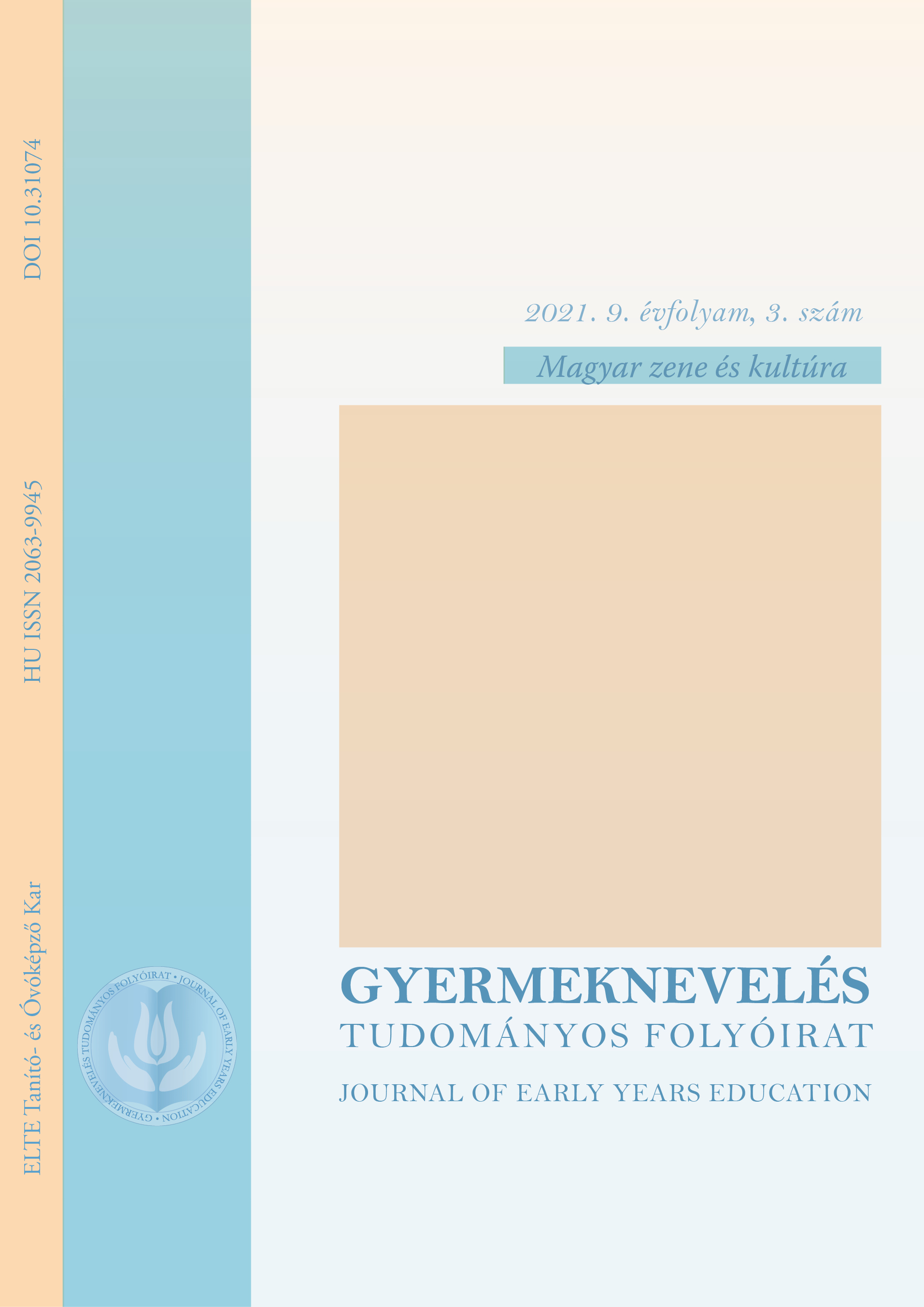Az intézményesült ének-zeneoktatás létrejötte, és annak momentumai 1948-ig
DOI:
https://doi.org/10.31074/gyntf.2021.3.77.92Kulcsszavak:
magyar kulturális élet, zeneiskolák története, kóruskultúra, egyházzenei mozgalmakAbsztrakt
Jelen tanulmány a nemzeti zenetanítás, a kulturális élet kialakulását, annak folyamatát mutatja be a kezdetektől az államosításig. Ennek keretében arra kíván válaszolni, kik ennek az irányítói, fenntartói és működtetői. Neves városok, egyesületek és iskolaalapítók szerepe, feladata kerül megnevezésre. Tanmenetekből, évkönyvekből, minisztériumi rendeletekből, hagyatékfeldolgozásból, helytörténeti múzeumok jegyzeteiből dokumentumelemzéssel nyert adatok alapján a koncert- és művészeti élet példáival összefüggésben kialakuló iskolarendszerekről kapunk képet. Fő cél bemutatni a nemzeti elem feltűnését az ének-zene tanítás és a kulturális élet színterein. Mindezt abban a kontextusban, hogy a felvázolt fejlődési folyamat a Trianoni békeszerződés előtti virágzó magyar városokból indult el, és végigélte a világégések kulturális, gazdasági és társadalmi rombolásait.
Letöltések
##submission.downloads##
Megjelent
Hogyan kell idézni
Folyóiratszám
Rovat
License
Copyright (c) 2021 Szerző

This work is licensed under a Creative Commons Attribution-NonCommercial-ShareAlike 4.0 International License.

